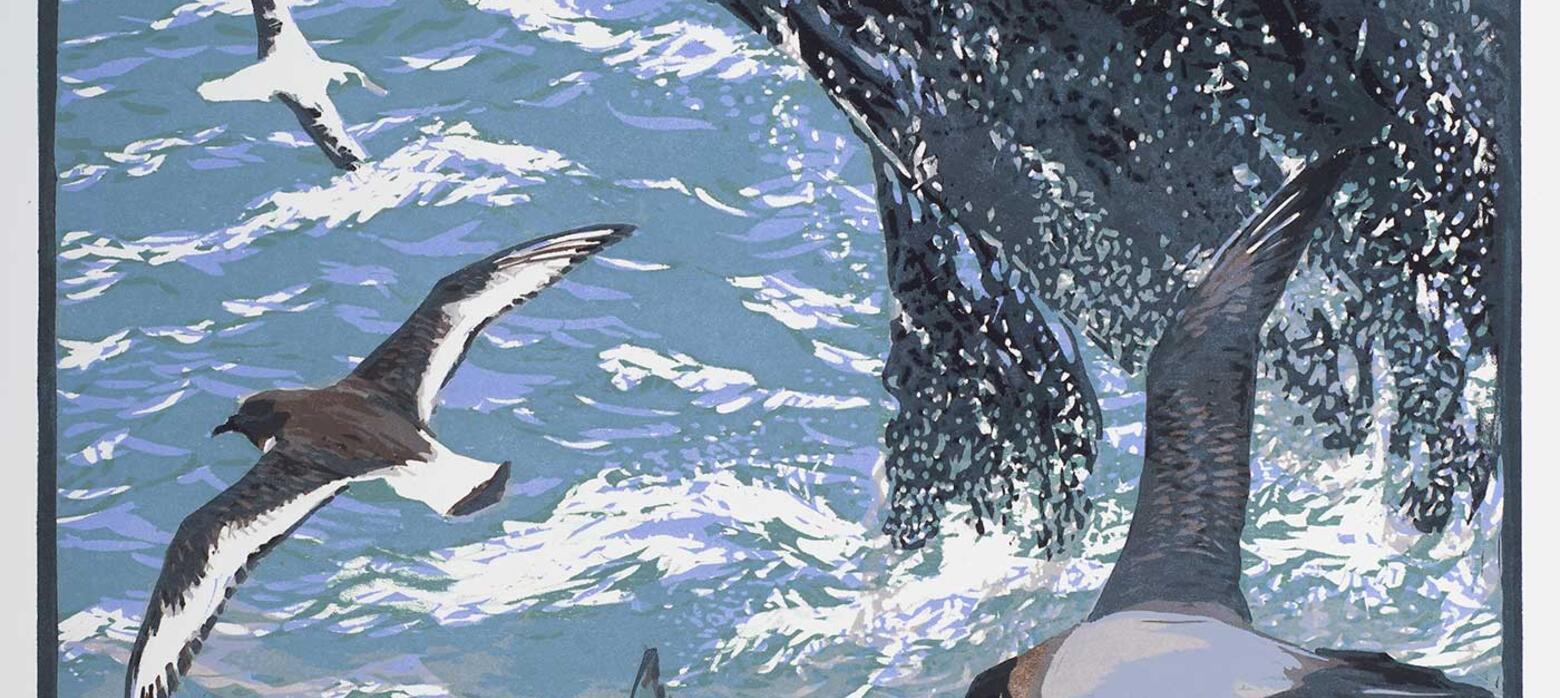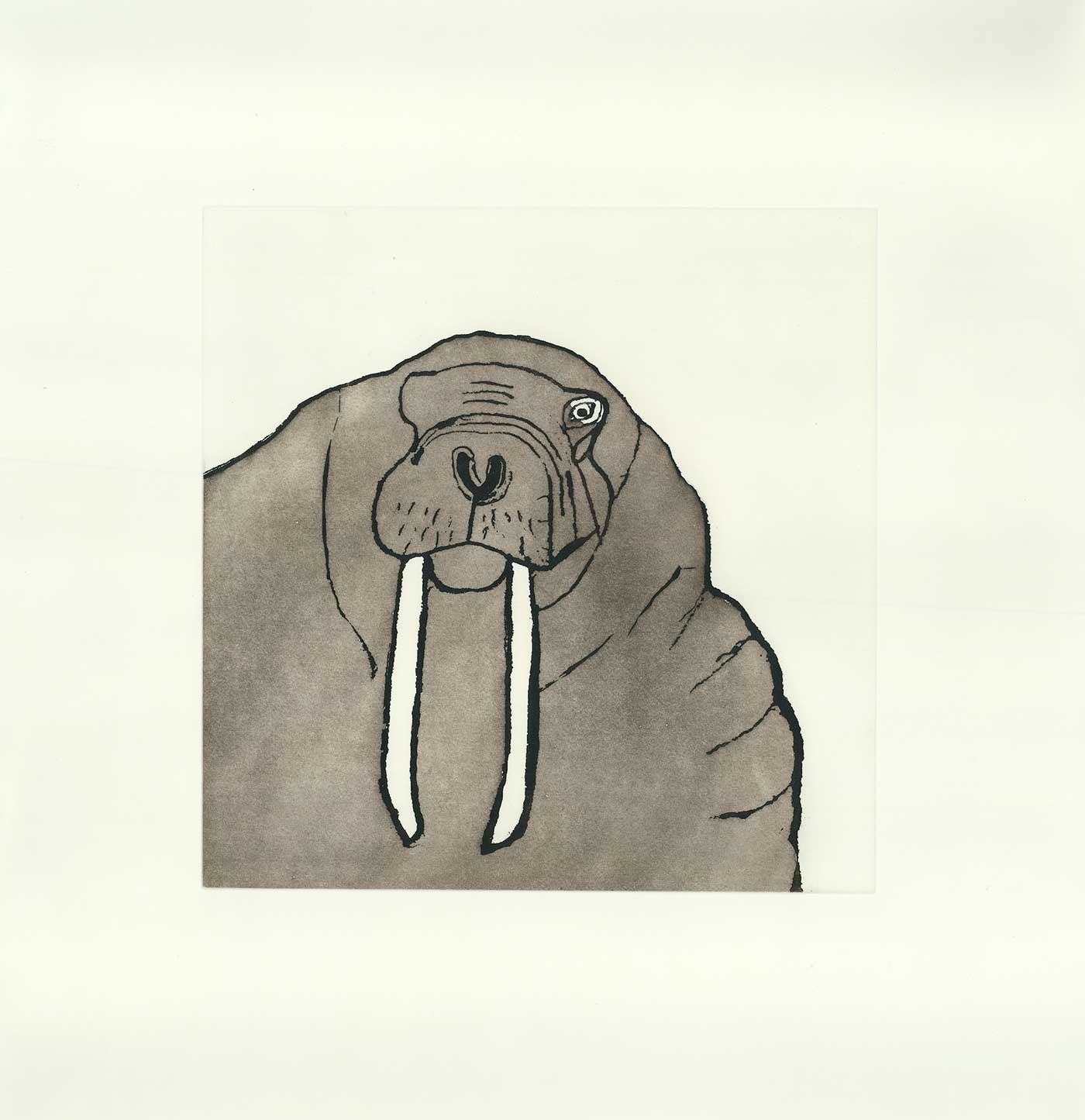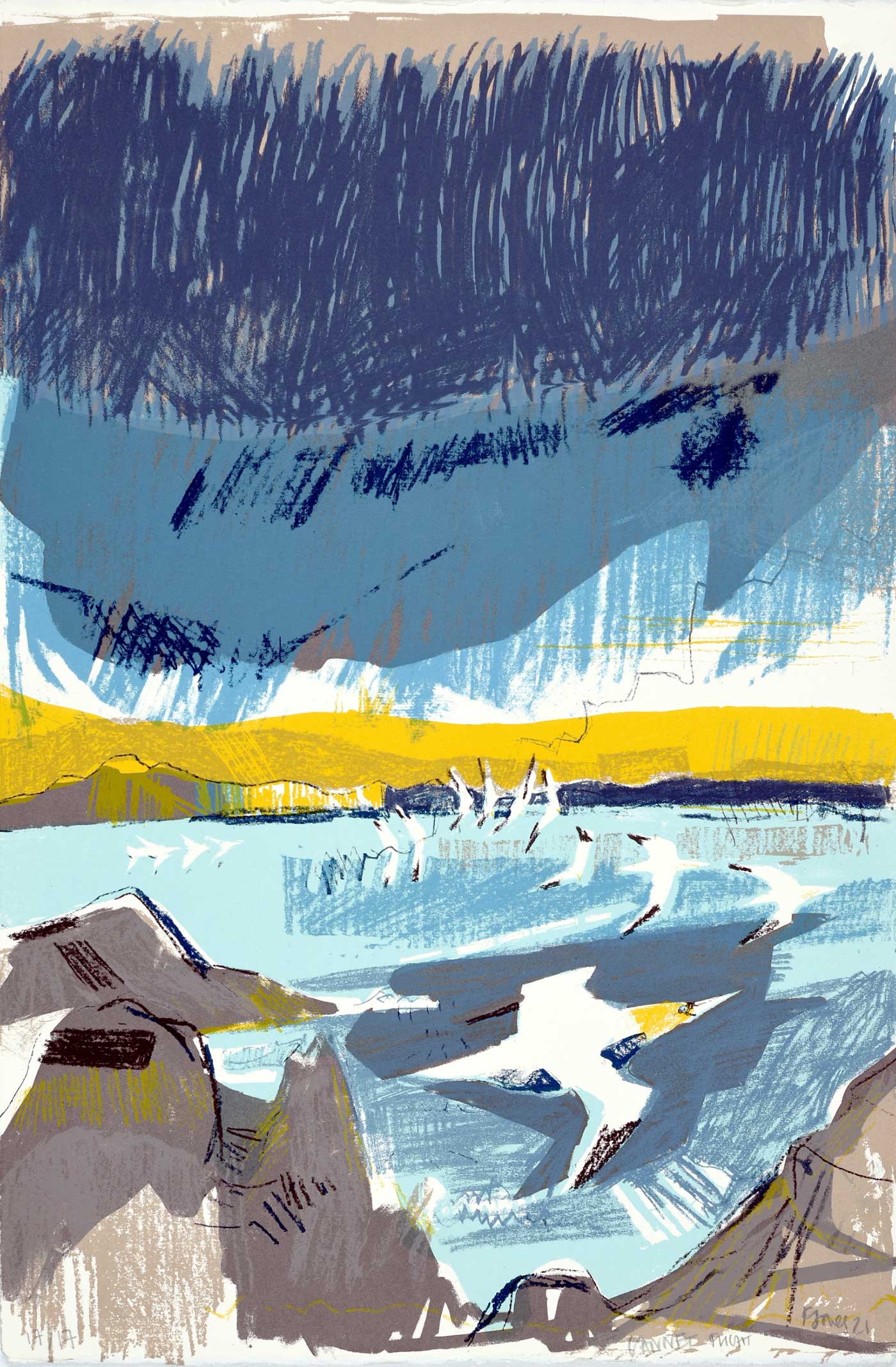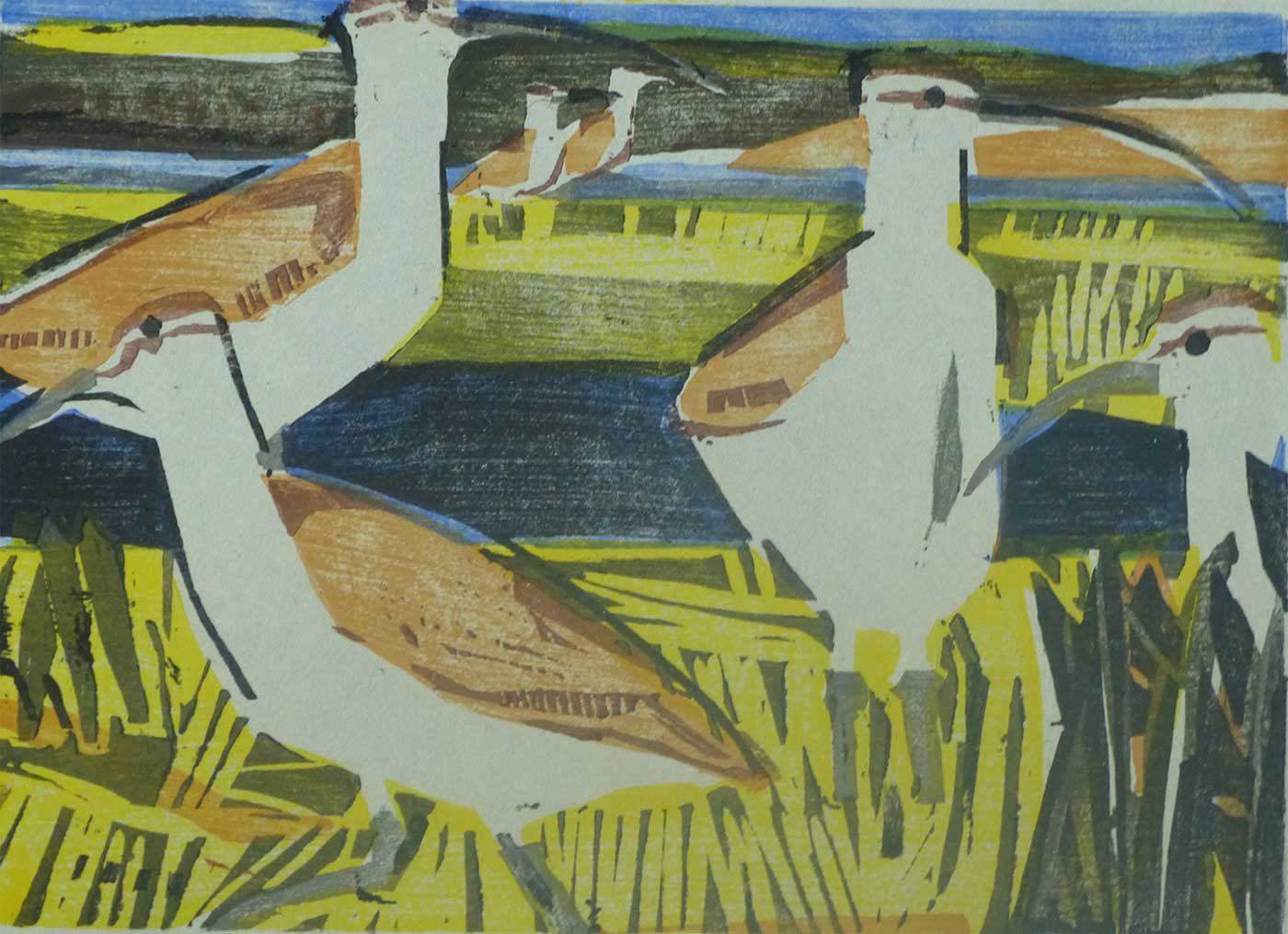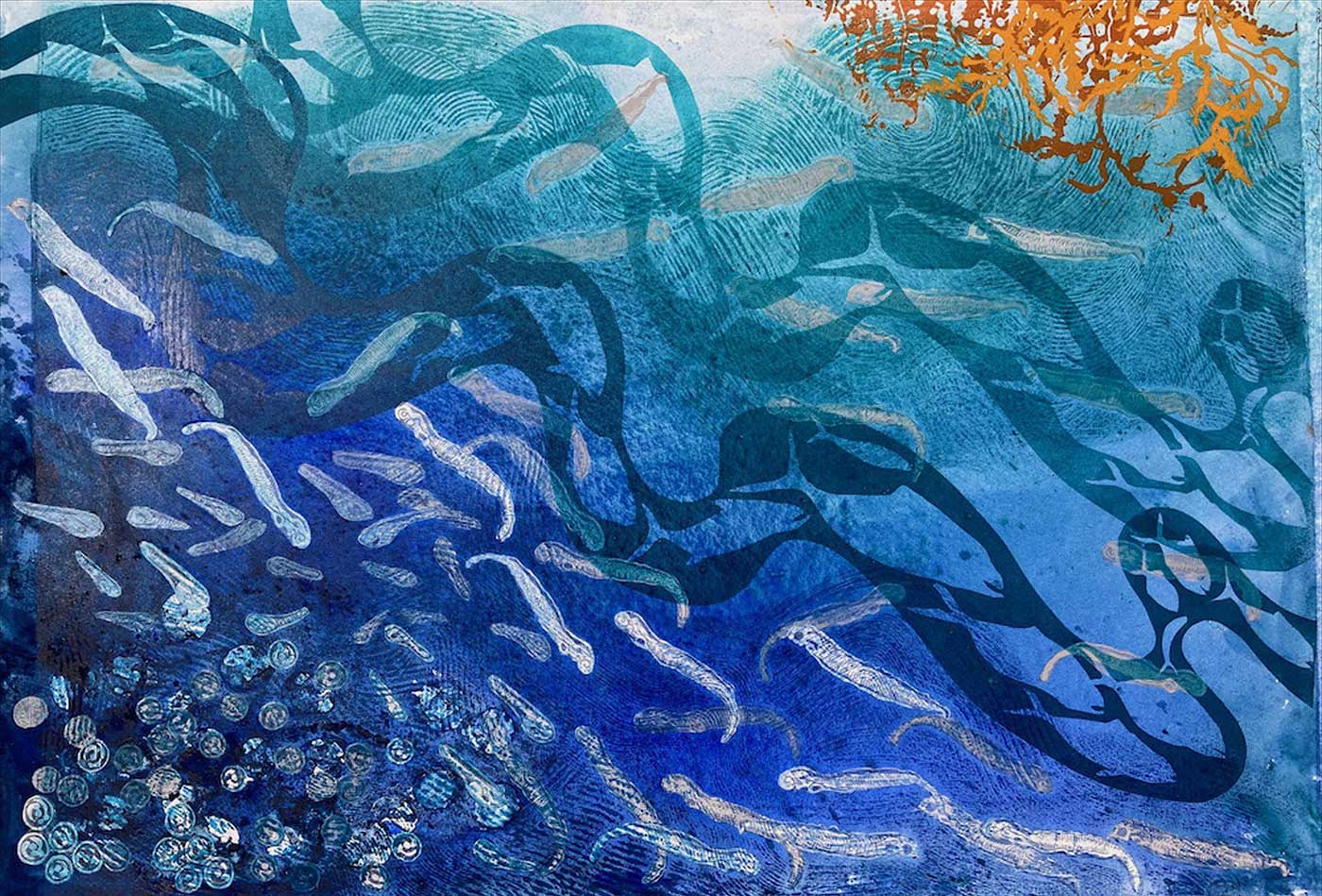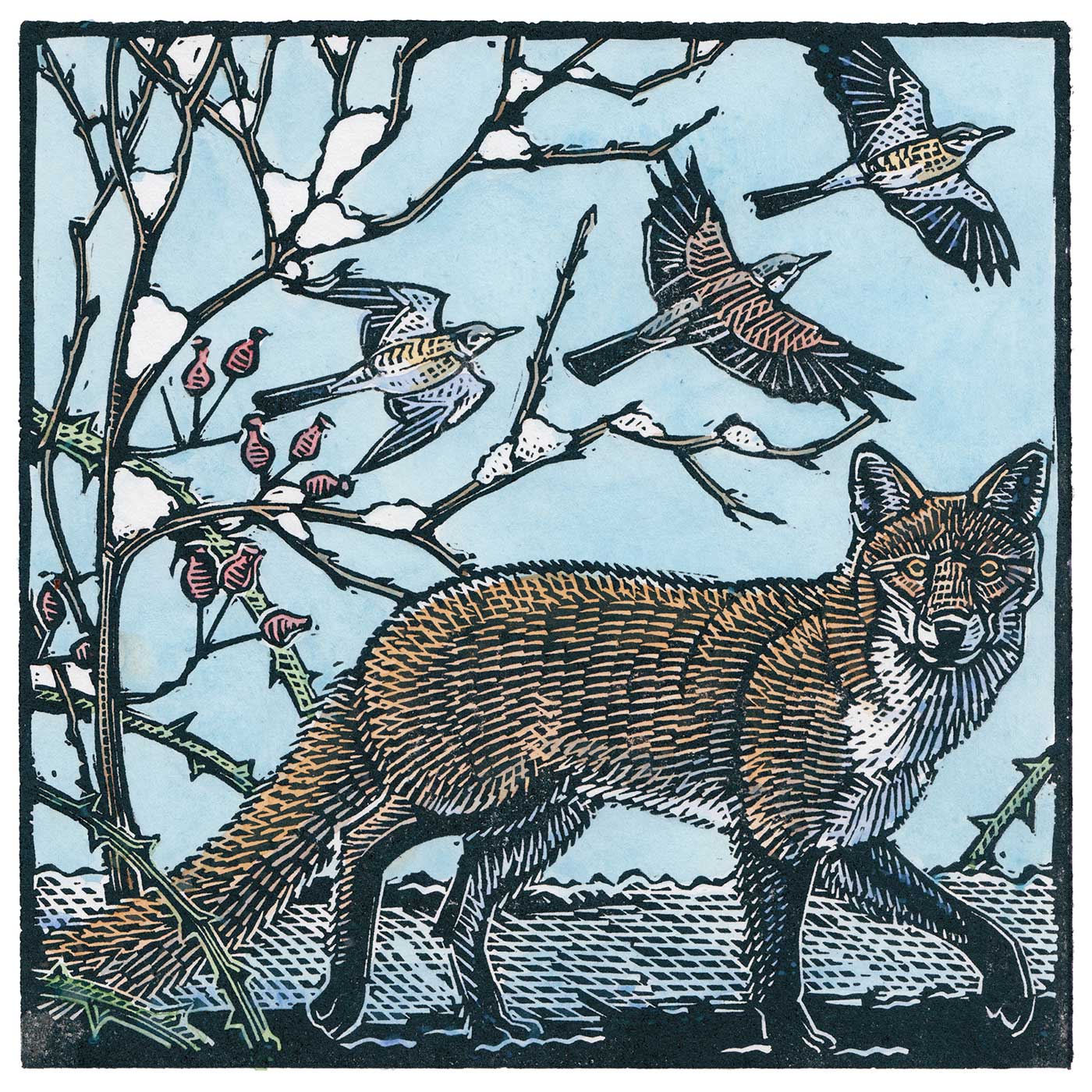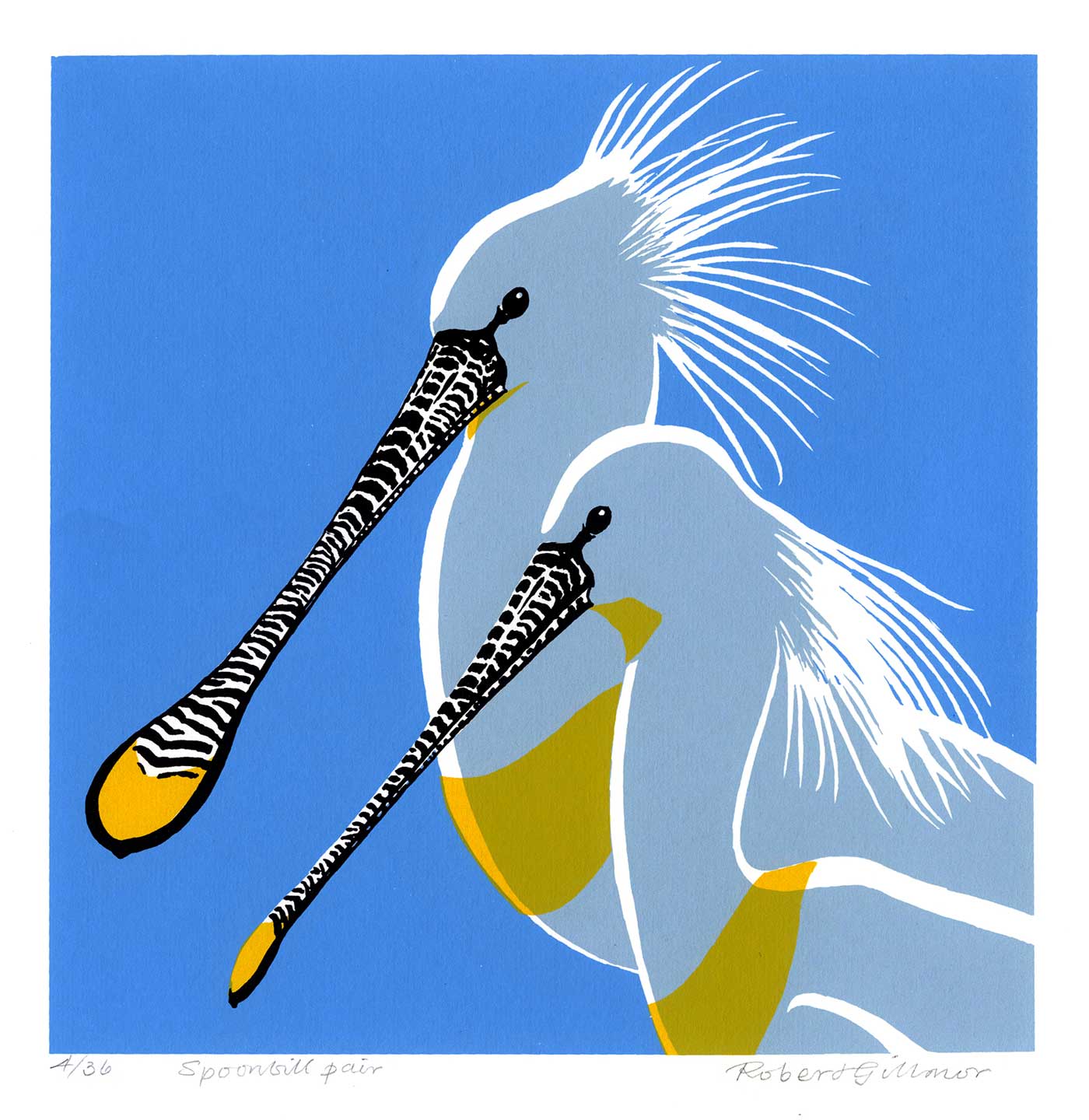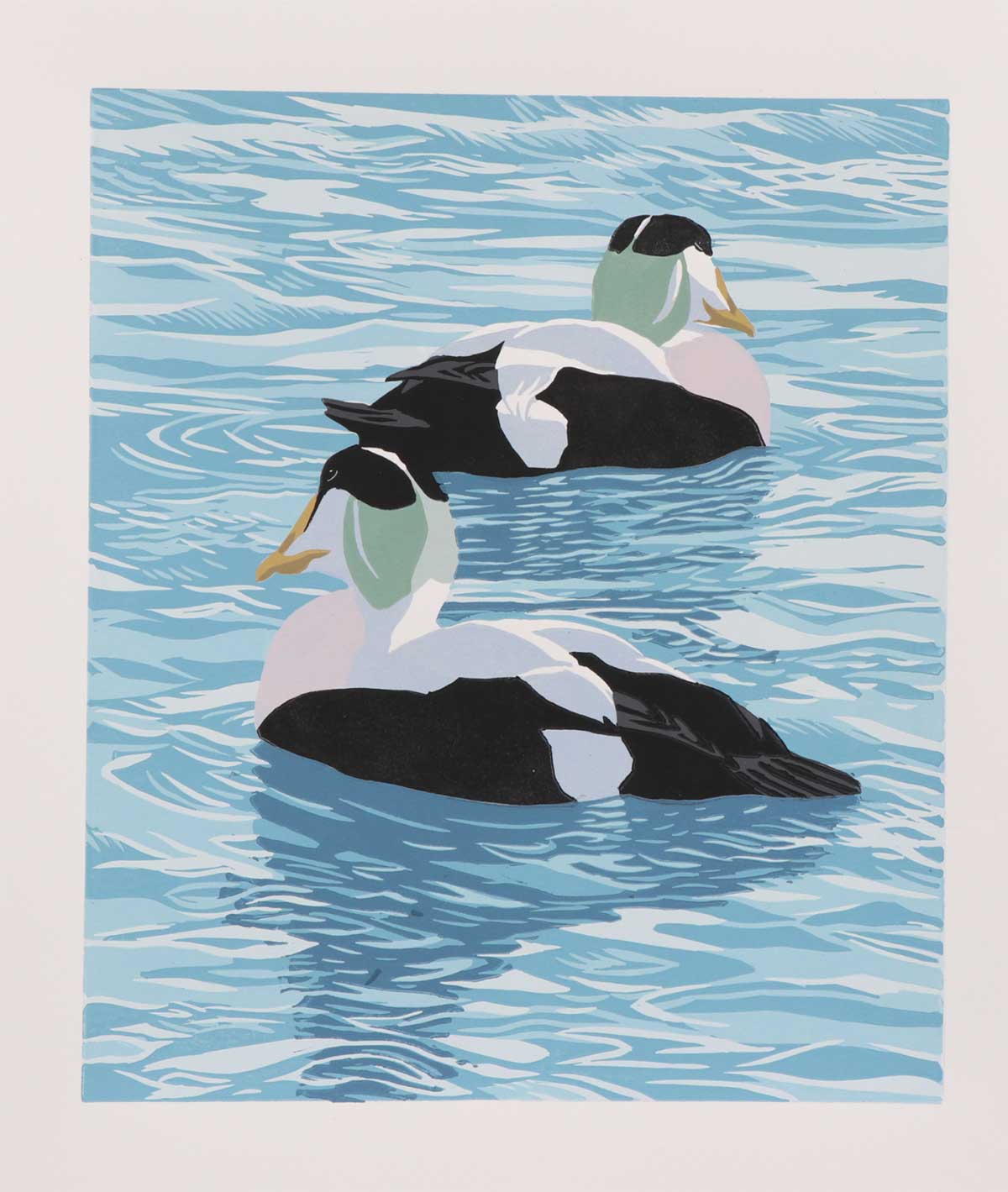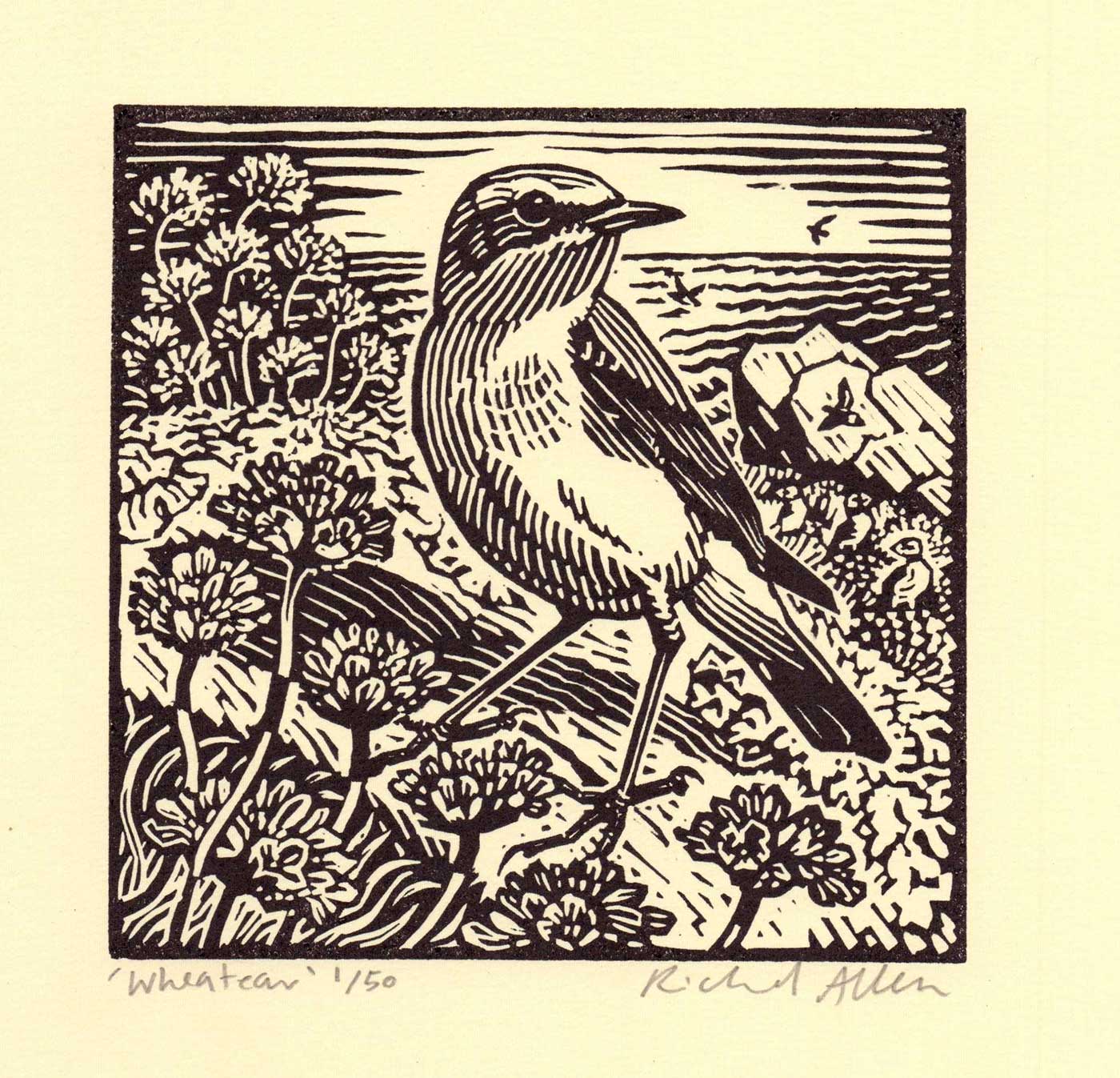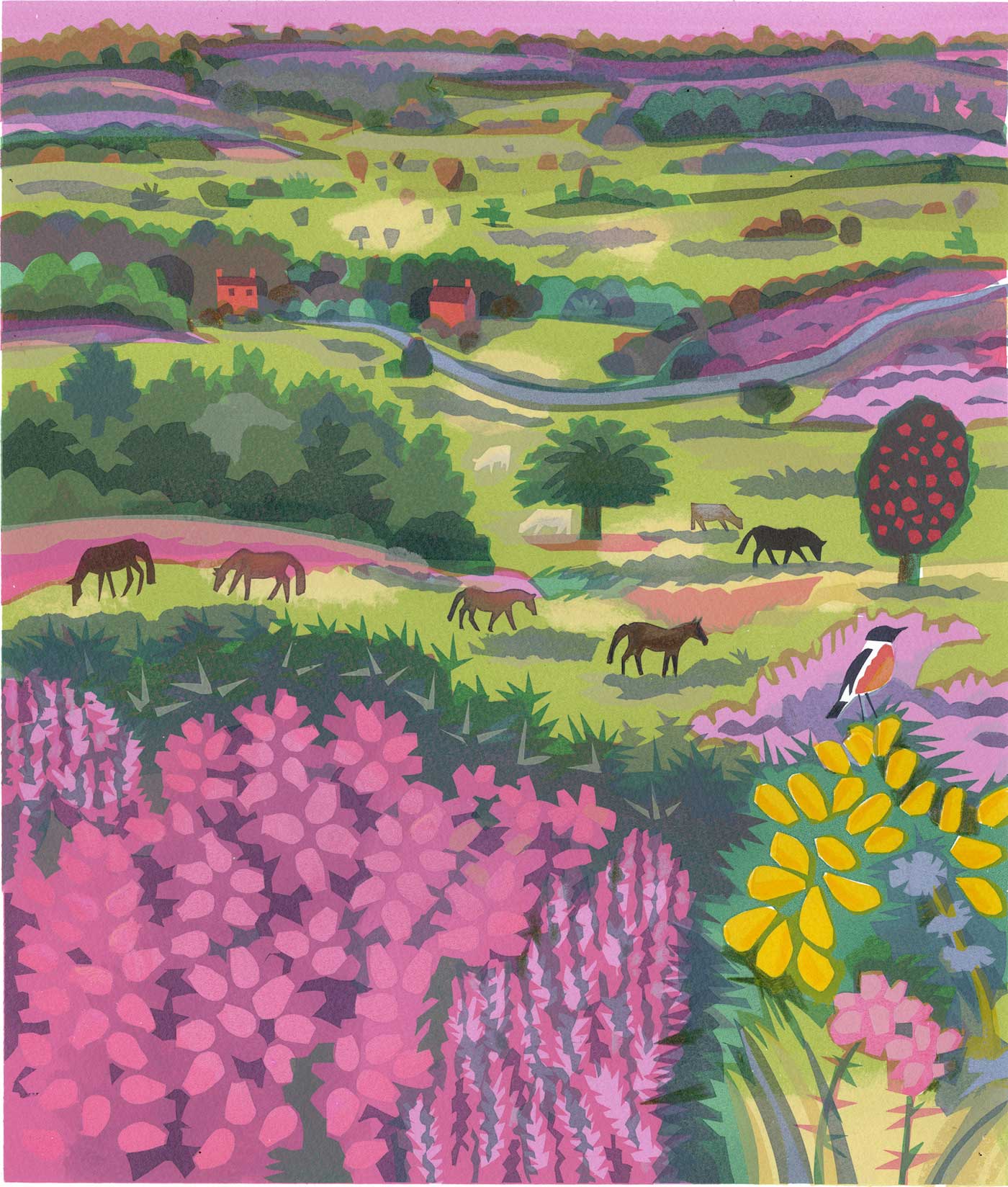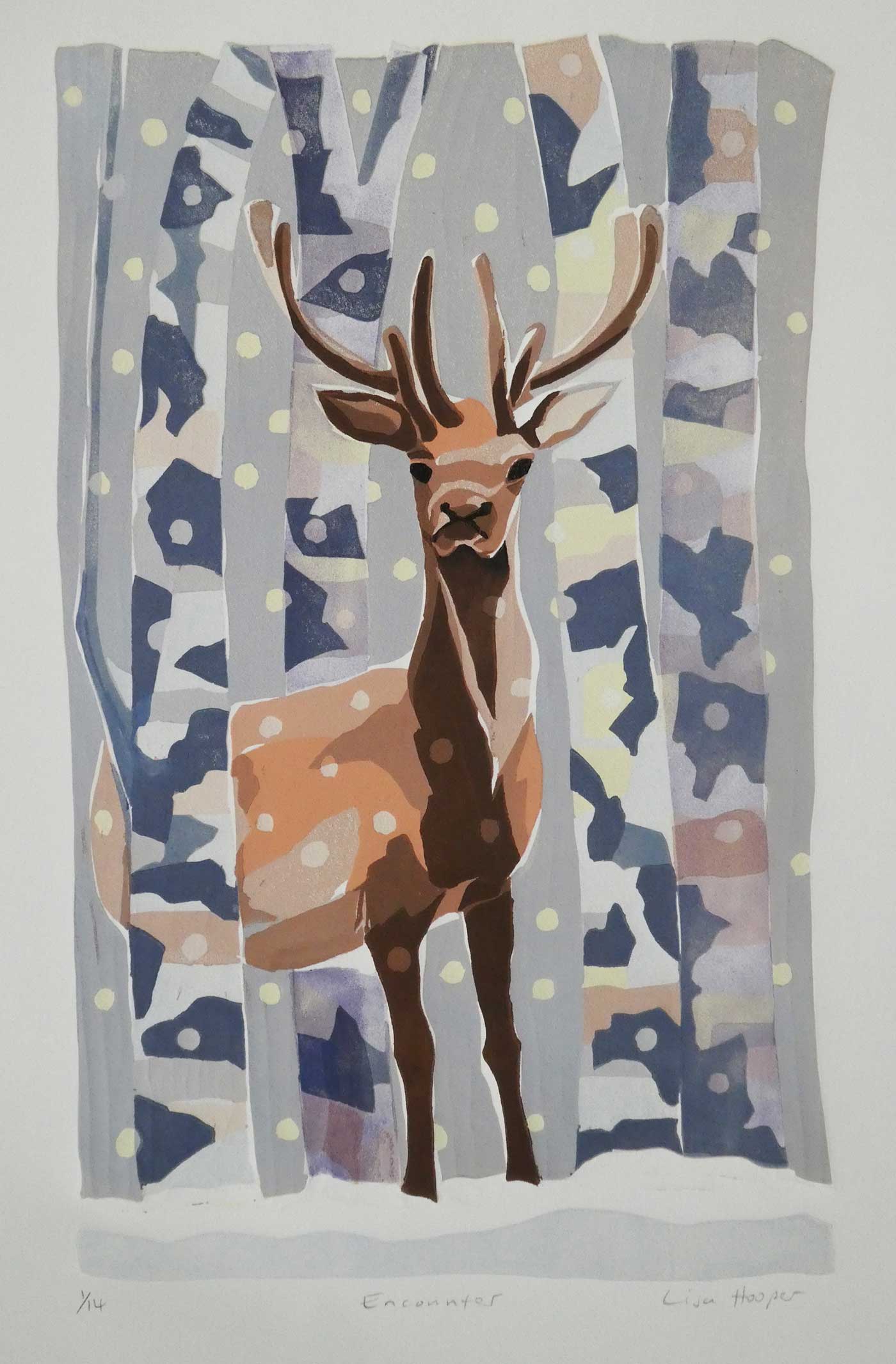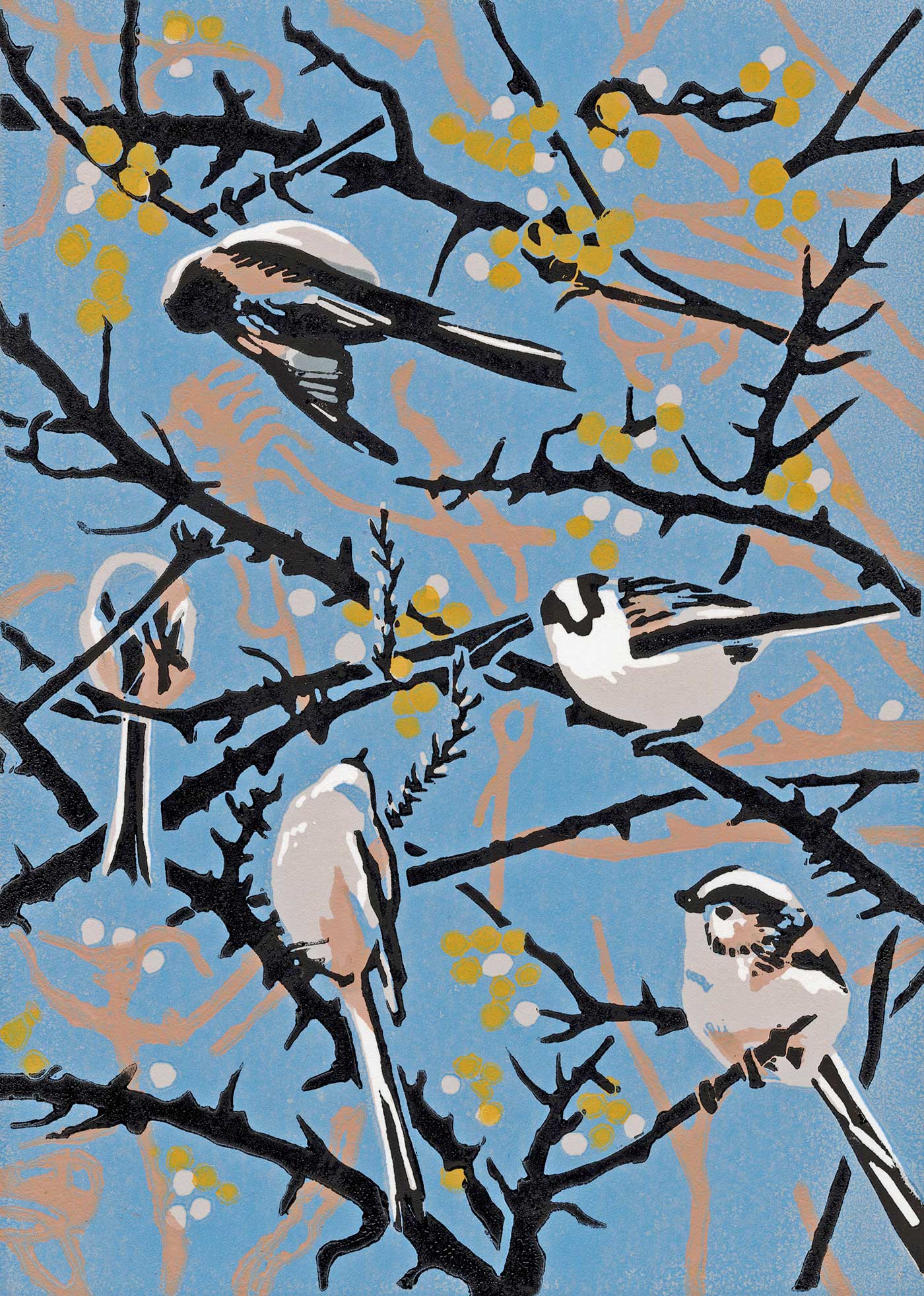Prints in The Natural Eye
/ Society of Wildlife Artists
Within the Natural Eye 2021 exhibition from the Society of Wildlife Artists, there are a number of pieces created using a wide range of printmaking techniques, which are available to purchase on our website now.
Purchasing original prints is a great way to begin collecting artwork, as they are a more accessible art form, starting from lower price points. Printmaking is a labor-intensive, time consuming and expert process, and whilst print editions mean each print is not entirely unique, they are still individually handcrafted and the craftsmanship and technical innovation is obvious to see within the finished artworks. This blog post showcases a compilation of some of the prints within The Natural Eye, but many of the artists featured have multiple prints available to purchase within the exhibition, so do make sure to take a further look at the prints on offer!
Southern Ocean, Bruce Pearson SWLA, Relief print (edition of 8, 5 available) 59 x 42 cm (61 x 44 cm framed), £525.
Bruce Pearson is a painter, printmaker and field naturalist, fascinated by the rhythm and restlessness of the natural world, pursuing ideas about wild landscapes and places where people and human activity interact with habitats to create interesting themes. He works directly from the field and has travelled extensively. Bruce then takes this work to his studio where he will reflect on his sketches and experiment with a variety of printmaking techniques.
‘Southern Ocean’ captures the moment a whale jumps out of the ocean, depicting the movement with the sea foam, whilst gulls soar across the sky in the foreground.
Walrus, Jack Haslam, Aquatint/Etching, 45 x 45 cm (50 x 50 cm framed) £240 print unframed.
Jack is a self-taught artist with Asperger’s Syndrome. Jack explains: ‘My love for animals has been a major influence in my life and is a driving force for my work. What others might consider minor and unimportant details are the things that inspire my work. I am fascinated by the minutiae of different animals: the gorilla’s cheeks and the anteater’s claws. My cognitive problems mean that I have difficulty relating to humans. I find them unfathomable at times. Animals help me manage my feelings of isolation and allow me to build bridges with people.’
Gannet flight, Kittie Jones SWLA, Screenprint (edition of 17, 9 available) 56 x 38 cm (70 x 52 cm framed), £310.
Kittie is a painter and printmaker, often creating small edition screen prints. She initially creates work outdoors inspired by creatures of the natural world.
‘Gannet Flight’ is a screenprint where gannets can be seen flying between the rocks in a sea-scape. Kittie explains: 'I am interested in the interaction between man and nature; this leads me to depict birds in my work. Birds form a direct relationship with man - wherever we are there are always birds to be seen. Birds have captured man's imagination for thousands of years and form a large part of our mythology. My work seeks to share with others my experiences in the natural world and to celebrate the rich diversity of British wildlife. I am inspired by the way in which the natural world stubbornly and doggedly continues despite man's constant efforts to eradicate and control it.'
Whimbrel at 2-Mile landing, Ken Januski, Japanese woodblock (edition of 10, 3 available), 20 x 25 cm (28 x 33 cm framed), £215.
‘Whimbrel at 2-mile Landing’ is a woodblock print, created by carving into wood. Each of the printed colours is made on a separate woodblock layer, which are then printed on top of one another. Ken Januski has depicted a group of whimbrels. Similar to a curlew, a whimbrel is a large wading bird, found in the North of Scotland, which breeds in the moorlands.
The decline of Eels No 7: Eggs and Larvae, Julia Manning SWLA, Woodcut, lino & stencils (edition of 6, 4 available), 50 x 75 cm (60 x 85 cm framed), £980
Within the exhibition, you will find a series of prints by Julia Manning which are a commentary on the dramatic decline of eels which has been happening over the last forty years, due to the impacts of climate change and of man-made structures such as weirs, dams and power stations. Over lockdown, Julia documented the story of eels, happening in real time in her local rivers and coastline. She captured the environment the eels passed through on their migration to and from the Sargasso Sea.
Julia’s inspiration regularly comes from drawing in the wild, the geology of islands, the colours and essence of different places and she sees her work as a colourful celebration of the natural word. She creates limited edition original handmade prints working with a variety of techniques, such as etching, collograph, relief prints, woodcuts and lino. You can read about her work in more depth on our blog here.
Fox and Fieldfares, Richard Jarvis SWLA, Linocut & watercolour (edition of 18, 2 available), 15 x 15 cm (32 x 32 cm framed), £95.
Richard is a wildlife artist and printmaker living on the Leicestershire/Northants border. All his prints are based on field sketches and first-hand observation. He depicts birds and wildlife animals amongst trees and flowers. This print ‘Fox and Fieldfares’ depicting a fox and fieldfares (birds that are a member of the thrush family) is a linocut, which has been additionally coloured using watercolours.
Spoonbill pair, Robert Gillmor MBE PPSWLA, Screenprint (edition of 36, 9 available), 25 x 25 cm (45 x 45 cm framed), £300
Robert is an artist and printmaker, often working in linocuts, or screenprints. ‘Spoonbill Pair’ is a screenprint depicting the long-legged wading bird, given their name due to their distinctive spoon-like bill. Screen printing is an effective method of using bright colours and a limited palette to create striking, graphic illustrative images.
Stubble field Lapwings, Jane Smith SWLA, Screen print (edition of 10), 32 x 40 cm (50 x 59 cm framed), £390.
Jane Smith is a trained zoologist which she combines with her love of painting and printmaking to communicate about why wildlife matters. She lives on the west coast of Scotland where most of her work is made. Her images always start with a real life experience, a wildlife encounter or an inspiring combination of colours and movement. She also finds the connection between the animal, and the surroundings that sustain it particularly important to capture. The energy of the work made in the field is used in the studio when printmaking - she uses a variety of printmaking techniques but has recently particularly been enjoying working with screen-printing.
‘Stubble Field Lapwings’ depicts a group of the ground nesting birds, effectively using a limited colour palette to create a striking image.
Swimming Eiders, John Hatton ASWLA, Linocut (edition of 12, 5 available), 35 x 29 cm (55 x 49 cm framed), £240.
John Hatton’s use of linocut in ‘Swimming Eiders’ really effectively captures the ripples and movement in the water. Eiders are a large sea duck, whose very soft feathers have historically been harvested for filling quilts and pillows.
Wheatear, Richard Allen SWLA, Linocut (edition of 50, 5 available), 13 x 13 cm (32 x 32 cm framed), £145.
Richard Allen’s strong use of bold and graphic lines used in his linocut technique creates striking images as he expertly captures birds within their natural habitats surrounded by plants. This print shows a Wheatear, a migratory bird arriving in the UK in March, favouring the upland habitat in Scotland, northern and south-west England before flying to Africa in September and October.
Heathland, Carry Akroyd SWLA, Serigraph (edition of 6, 2 available), 48 x 40 cm (52 x 44 cm framed), £380.
Carry Akroyd's work is about landscape, usually the intensively cultivated arable farmland, where she focuses on the wildlife surviving on the margins. Her starting point is direct drawing in the landscape. ‘Heathland’ is a serigraph (silkscreen print) which is an example of this, showing the rolling hills, flowers and animals amongst the farmland landscape. Carry explains: ‘I combine monoprinting methods and photostencils, to test the dynamic between planned intentions and spontaneous reactivity in building up an image; the interface between the deliberate, the impulsive and the accidental.’
Encounter, Lisa Hooper ASWLA, Reduction linocut (edition of 14, 2 available), 44 x 28 cm (62 x 45 cm framed), £350.
Lisa Hooper’s ‘Encounter’ is a reduction linocut, in which the viewer is in direct eye-line with a deer in the snow, who is emerging from the trees. Lisa explains she is driven by her love for the natural world, and the man-made challenges the natural world faces. She likes to depict the character or essence of different animals, and likes to capture pattern and form, hoping that people will connect with the observation she makes about her subjects and that they will empathise with them.
Lisa adds: ‘What attracts me to printmaking is the surface quality of the finished prints and the intervention of a craft process between the concept and the image. I also enjoy the process of abstraction which printmaking demands: there is a tendency to pair my subjects down to their essence which I believe is rooted in the deliberate and technical design process of printmaking itself.’
Sea Buckthorn, Max Angus SWLA, Linocut (edition of 24, 4 available), 29 x 28 cm (53 x 43 cm framed), £270.
The last print to highlight is Max Angus’ linocut ‘Sea Buckthorn’. Max comes from a strong graphic drawing background which translates into her printmaking process. She is inspired by her everyday experiences and tries to capture the shared moment with wildlife in their natural surroundings, finding it important to ground her subjects in their own space or environment. She works initially fromlife, keeping a sketchbook capturing limited detail with a pencil which she will then work from to create outlines for her linocuts. In her studio, the sketches are put together to create a composition that she feels represents the movement of the subject, the weather or what she can remember of that time.
The blocks are cut first considering light, shade and the overlapping of colours to make additional colour combinations. The limited palette takes weeks of trial and error. Each colour chosen is dependent on the relationship and quantity of the adjacent colours and the overlapping blocks. If the image requires additional colours then additional blocks are introduced. ‘Sea Buckthorn’ captures a collection of tits perching at different angles amongst the branches of a sea buckthorn plant.
The Natural Eye is on in the gallery until Sunday 24 October 2021. We hope you enjoyed learning more about a selection of the prints that are available within the exhibition, and many of the artists have a larger selection of their prints on offer which we encourage you to explore it in more depth.
Article written by Hannah Martin

